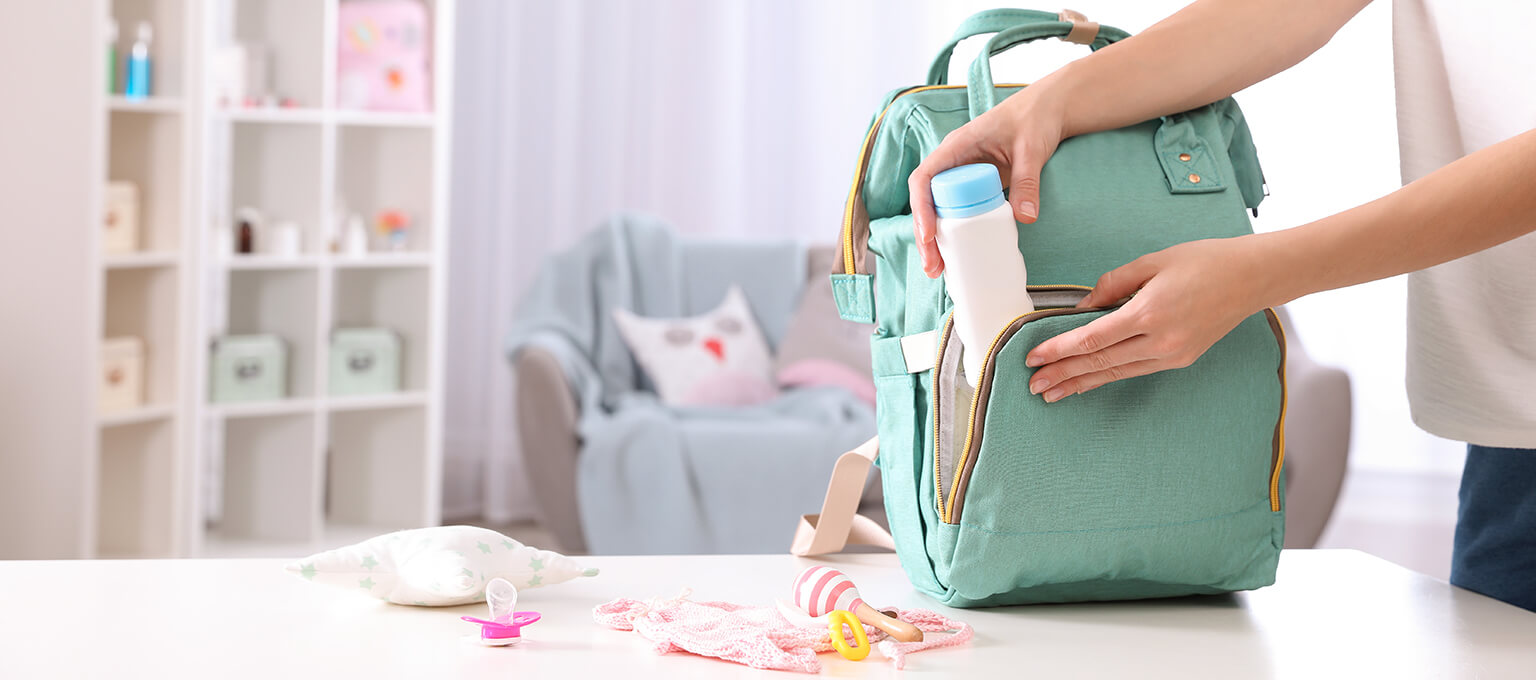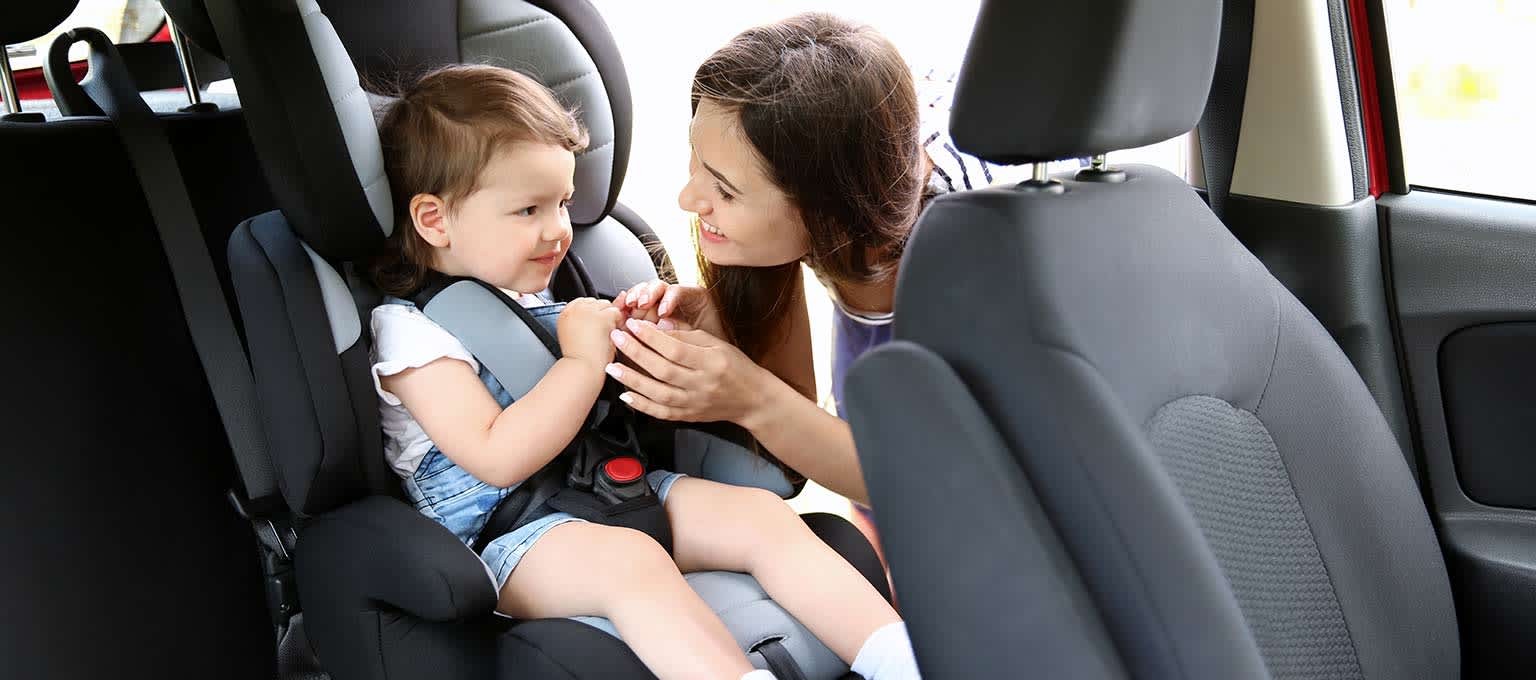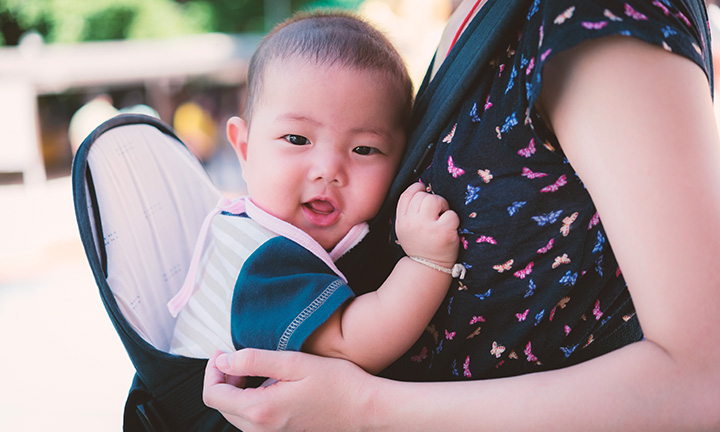
All About the Best Baby Car Seats
Key Takeaways
Whether you’re looking for a car seat for your newborn or toddler, or you’re wanting one that's suitable for your baby now and up until he starts school, you’ve come to the right place! To help you select a car seat, also known as a car safety seat, we're sharing the ones that over 18,000 Pampers Parents voted for as the best car seats. Based on their pros and cons, we’ve reviewed the top five infant, convertible, and booster car seats. Before diving into the best car seats lists, read about the different types, learn what to consider when buying one, and find out when you might need to upgrade.
What Types of Car Seats Are There?
There are many car seats on the market. Some are designed to suit your child during one specific stage, while others are designed to last as your child grows.
I want a car seat with the ability to go from infant to toddler stage so that it can be used for a longer period of time.
Pampers Parent
These are some of the most common types of car seats:
Choosing which car seat is best isn’t always easy. Check out the infographic below to see your options at a glance:
What to Consider When Buying a Car Seat
There’s no single best or safest car seat because there are many factors to consider when deciding which one will best suit your child as well as your needs. It’s important to choose a seat that is right for your child’s size, install it properly, and use it correctly each time.
A five-point harness system with seat belt cover, removable padding for easy cleaning, and head-and-neck bumpers are all requirements for me.
Pampers Parent
Beyond that, when choosing a car seat, consider these questions:
When to Switch to a Different Type of Car Seat
The first thing I look for is the car seat’s safety—that is the most important. Then I check for how long my baby could use it.
Pampers Parent
Your child needs to stay in a rear-facing seat as long as possible, or until he reaches the maximum height or weight allowed by the seat manufacturer. A rear-facing seat is safest for a young baby or toddler.
As your child grows and reaches the height and weight limits specified by his car seat’s manufacturer, he will progress from a rear-facing positioned seat to a forward-facing positioned seat, and then to a booster seat. Some car seat manufacturers give age limits for the different styles of car seats, but those age limits are general guidelines.
If your child has developmental needs, you may need switch to a different type of car seat. If you’re in doubt, don’t hesitate to ask your child’s healthcare provider.
Best Infant Car Seats
Infant car seats are rear-facing seats designed for babies weighing between about 4 to 40 pounds. These types of car seats are the best fit for newborns and younger babies. Pampers Parents favored the following seats:
1. Chicco KeyFit 30 Infant Car Seat
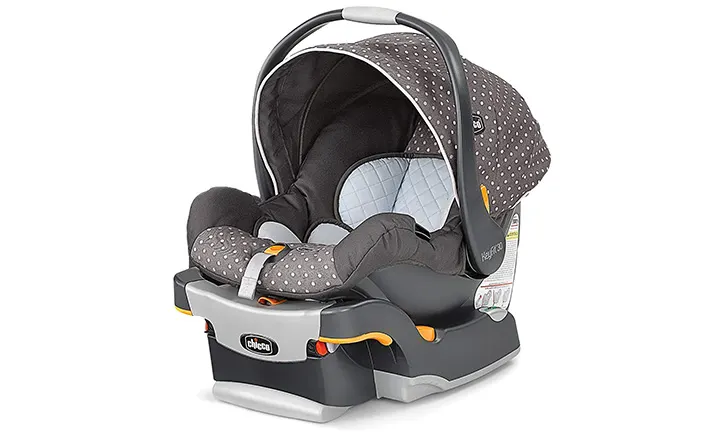
Why pick this one? The KeyFit 30 seat base has a ReclineSure leveling foot and two RideRight bubble level indicators to help make sure you’ve got the base positioned in the correct angle in the seat of your car. The base has LATCH connectors and a SuperCinch tightener to help you more easily get the seat secured in your car.
This seat comes with a five-point harness that has a one-pull tightener. It’s compatible with Chicco strollers. Plus, there’s a removable newborn head and body support as well as a canopy to help keep your baby shaded.
Be aware that this seat is a little heavier than others, so transporting it could be more difficult as your baby grows.
Highlights: The base part of this car seat has a smooth underside to help protect the seat of your vehicle from damage. Plus, the two-position carry handle and one-hand release make this seat easier to remove and transfer.
Details:
Price*: about $199.99 on Amazon.com
Pampers Parents pros and cons:
2. Graco SnugRide SnugLock 35 Infant Car Seat
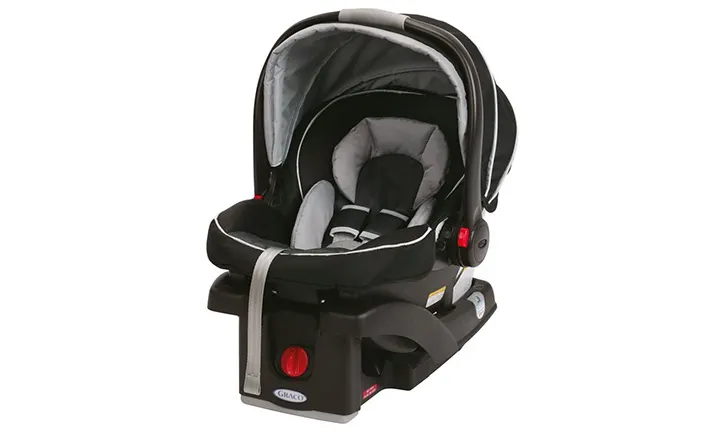
Why pick this one? The SnugLock technology of this car seat makes for an easy three-step installation. The adjustable base helps you customize the fit of the seat to your car. It reclines to four different positions. An easy-to-read level indicator takes the guesswork out of finding the correct angle for proper installation.
This seat has a rotating canopy to provide shade for your baby. Plus, this seat comes with a five-point harness and a padded insert for newborns or smaller babies. A handy compartment stores the LATCH connectors and user manual when you’re not using them.
Highlights: The Click Connect technology gives a one-step attachment of the car seat to all Graco Click Connect strollers and bases. (Many infant carriers come with a base unit that is secured into your vehicle and stays there. You can insert and connect the carrier/seat into this base unit and simply disconnect when needed. You can transfer the carrier/seat from the base to the stroller if it’s compatible.)
Details:
Price*: about $195.99 on Amazon.com
Pampers Parents pros and cons:
3. Britax B-Safe 35 Infant Car Seat
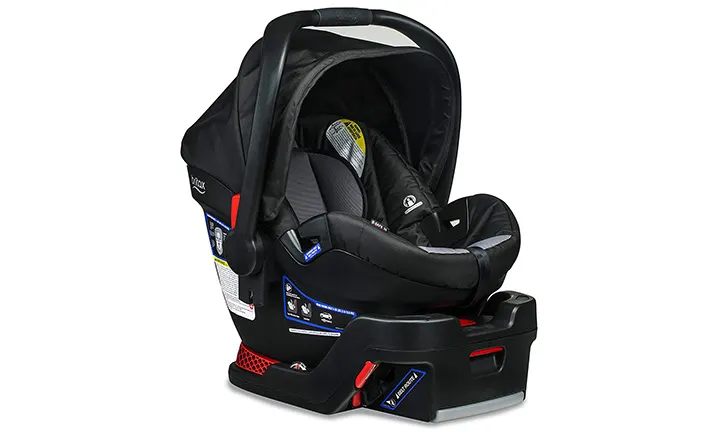
Why pick this one? The SafeCell Impact Protection system this seat offers includes a steel frame and an energy-absorbing base. The removable infant head pad cushions and provides additional support for your newborn.
This seat uses SafeCenter LATCH and built-in seat belt locks for simple installation. With its Click & Go System, this seat securely attaches to any Britax stroller. Be aware that several Pampers Parents commented that this seat is heavy to carry.
The Relax & Recline feature is a spring-assisted recline with indicators to help ensure the seat is installed in your car at the best angle.
Highlights: The easy-to-remove cover makes for quick cleaning. Plus, the contoured shell minimizes side-to-side movement.
Details:
Price*: about $199.99 on Amazon.com
Pampers Parents pros and cons:
4. Evenflo Vive Travel System with Embrace

Why pick this one? This car seat comes with multiple reclining positions as well as a three- to five-point harness, which is a harness that converts to connect to the car seat in either three places (three-point) or five places (five-point). This seat and stroller combination has a canopy for sun and wind protection along with a “peekaboo” window that allows you to see your little one while he’s in the stroller. This seat moves easily from the base unit that stays in the car to the stroller.
Several Pampers Parents voiced concern about the fact that the stroller portion makes the locking click sound even when it’s not actually locked securely, so the unlocked stroller can collapse unexpectedly. Carefully review the manufacturer’s instructions to make sure the stroller is securely locked before you put the car seat carrier into the stroller.
Highlights: This infant car seat comes not only with the base for car installation, but also with the compatible stroller.
Details:
Price*: about $112.49 on Amazon.com
Pampers Parents pros and cons:
5. UPPAbaby MESA Infant Car Seat
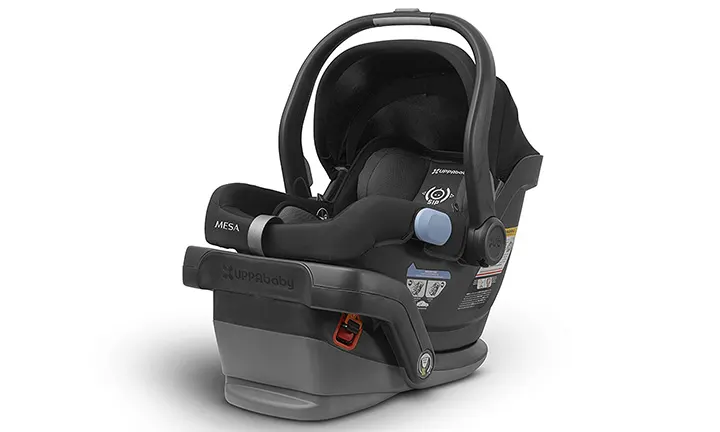
Why pick this one? This car seat comes with a tightness indicator and self-retracting LATCH connectors for easy and accurate installation. It also has a level indicator on both sides of the base unit to ensure the base is properly leveled for secure installation. An indicator window changes from red to green when the seat has been installed correctly. This car seat is compatible with UPPA strollers.
Be aware that some parents mentioned that in warm weather their baby tends to get hot in this seat.
Highlights: This seat comes with an infant pillow insert for babies between four and eight pounds, plus the built-in wedge of the insert provides a flatter riding surface for preemies and small newborn babies.
Details:
Price*: about $299.99 on Amazon.com
Pampers Parents pros and cons:
Best Convertible Car Seats
Convertible car seats can be moved from a rear-facing position to a forward-facing position, and some can transform into a booster seat for your school-aged child. All the convertible car seats on this list have a five-point harness.
1. Graco 4Ever 4-in-1 Convertible Car Seat
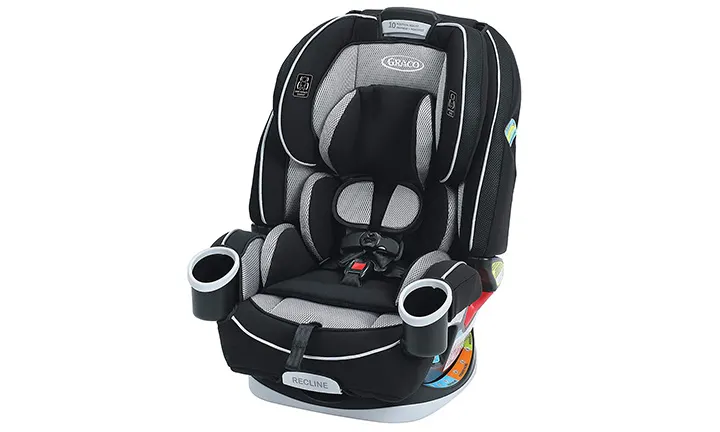
Why pick this one? This car seat can be converted to a rear-facing seat, a forward-facing seat, a high-back booster seat, and a backless booster seat. Depending on how the seat is placed and configured, it can work for babies and children who weigh between 4 and 120 pounds.
The Simply Safe Adjust Harness System and 10-position headrest are both adjustable for a comfortable and secure fit for your little one. The six-position recline allows you to adjust how your child sits—from a reclined angle to a more upright position.
This seat can be installed using either the car seat belt or the seat’s LATCH system.
Some parents mentioned that the product labels on this car seat can get very hot when the temperature rises. In the warmer months, to cool down the seat as well as to help prevent heatstroke, it’s a good idea to turn on the air conditioning for a few minutes before putting your baby in the seat.
Highlights: The seat cushion is removable and machine washable. This seat also has two built-in cupholders.
Details:
Price*: about $309.99 on Amazon.com
Pampers Parents pros and cons:
2. Graco Extend2Fit Convertible Car Seat
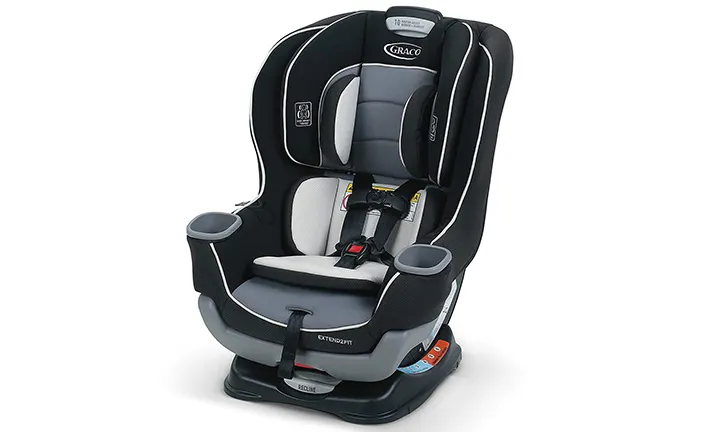
Why pick this one? The Graco Extend2Fit converts from a rear-facing car seat to a forward-facing one. To help make the rear-facing position more comfortable as your little one grows, the car seat features a four-position extension panel that adds five inches of additional legroom.
Adjustability is key with this convertible car seat. It features a 10-position headrest so you're able to custom fit it to your child’s height as she grows. A six-position recline enables the safest positioning inside your vehicle and ensures your child’s comfort.
Other notable features include an easy push-button InRight Latch to attach the car seat to your vehicle’s back seat, harness storage to make it less difficult to get your child in and out, and cupholders.
Highlights: The No-Rethread Simply Safe Adjust Harness System allows for adjusting the height of the car seat’s headrest as well as the harness in one motion, making it simple to secure your little one.
Details:
Price*: about $190.79 on Amazon.com
Pampers Parents pros and cons:
3. Safety 1st Grow and Go 3-in-1 Convertible Car Seat

Why pick this one? The Safety 1st Grow and Go offers a five-point QuickFit Harness that helps you adjust both the security harness and the headrest in one simple step. The three-position recline helps keep your baby comfortable and also makes the seat easier to fit in your car.
This car seat comes with two pillow inserts to make sure your baby has a snug fit. The pillows are easily removable once your baby outgrows them. The seat pad is machine washable and dryer safe, and there are two built-in cupholders.
Be aware that a few parents mentioned that you might need to take some extra time to initially get this seat fitted to your vehicle.
Highlights: The integrated harness holders keep the five-point harness in an open position so it’s simpler to get your baby in and out of the seat.
Details:
Price*: about $175.44 on Amazon.com
Pampers Parents pros and cons:
4. Evenflo EveryStage DLX All-In-One Car Seat
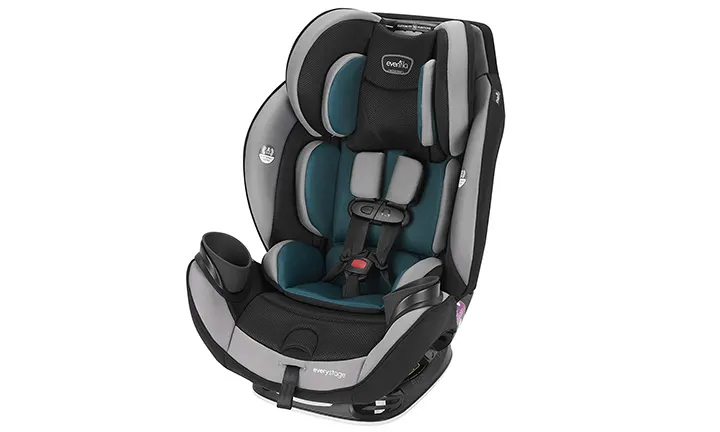
Why pick this one? The EasyClick LATCH system on this seat helps you have a wiggle-free seat without having to wrestle with it: The EasyClick system ratchets for secure installation in seconds.
For use from infancy to early childhood, this seat converts from a rear-facing infant seat all the way through to a booster seat for your school-aged child. This seat offers more rear-facing seat space so your baby can stay in the rear-facing position longer without being cramped. Be sure to check the manufacturer’s guide for the maximum height and weight limits for the rear-facing position.
This seat comes with two cupholders that are dishwasher safe, and the removable seat pad is machine washable. Bear in mind that the cupholders are removable, so your baby may be able to take them out.
Highlights: The in-seat recline of the Evenflo EveryStage helps minimize head slump and provides enhanced support for your baby.
Details:
Price*: about $199.99 on Amazon.com
Pampers Parents pros and cons:
5. Chicco NextFit Convertible Car
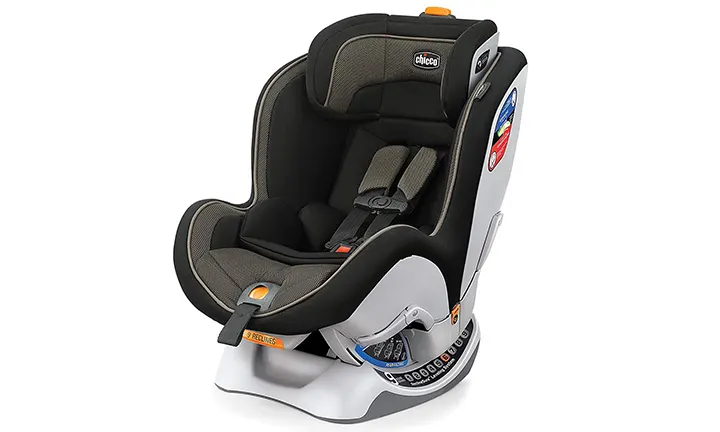
Why pick this one? The Super Cinch LATCH Tightener of this Chicco NextFit seat helps you get a secure fit in the car with less effort. It's easy to install, and with the ReclineSure nine-position leveling system, you can also get a better fit in a wider range of cars. Plus, the nine reclining positions help accommodate your baby as she grows. Two integrated Ride Right bubble levels indicate the correct seat angle for either the rear-facing or forward-facing position.
This car seat comes with removable cupholders as well as a removable padded insert to accommodate babies that weigh from 5 to 11 pounds. Keep in mind that although the fabric on the seat is removable and washable, some parents mentioned that it might take a little extra time to figure out how to remove it.
Highlights: This car seat has a six-position headrest and a no-rethread harness with a one-pull tighter for easy adjusting.
Details:
Price*: about $359.99 on Amazon.com
Pampers Parents pros and cons:
6. Britax Boulevard ClickTight Convertible Car Seat
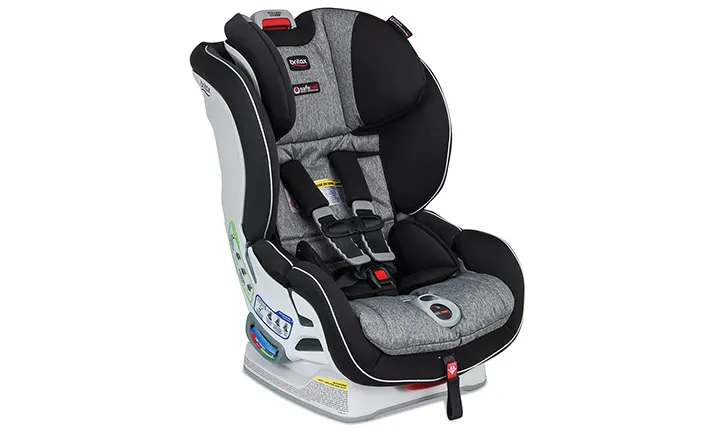
Why pick this one? This Britax convertible car seat has a ClickTight Installation system that enables seat installation in three easy steps. It also has an extra layer of side-impact protection. The Britax SafeCell Impact Protection system includes a steel frame, an energy-absorbing base, and V-shaped tether to reduce seat rotation.
To accommodate your growing baby, the harness adjusts to 14 different positions. The seat has premium padding and seven recline positions to keep your baby comfortable as he grows. Bear in mind that this car seat doesn’t come with cupholders.
Highlights: The Click & Safe Snug Harness system of this car seat makes a clicking sound when the harness is secure.
Details:
Price*: about $259.99 on Amazon.com
Pampers Parents pros and cons:
Best Booster Car Seats
Booster seats are the last seat your child will need to use before she outgrows it and begins using only a seat belt. Below are the top five booster seats Pampers Parents voted for. All the booster seats listed are tested for side-impact safety.
1. Graco Affix Youth Booster Seat With LATCH System
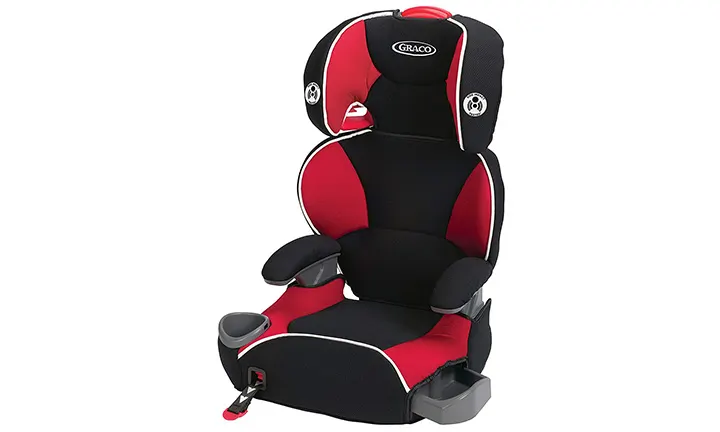
Why pick this one? The high-back booster converts to a backless booster so you can get many years of use out of this product. The high back has a fully adjustable headrest. This seat allows for a slight recline, plus it has a built-in cupholder and a hide-away storage compartment.
Highlights: The front-adjust, one-hand LATCH system allows you to quickly tighten this booster seat into a secured position in your vehicle. Because the seat stays in the secured position, it makes it possible for your “big kid” to self-buckle the seat belt. Even when your child is old enough to self-buckle, it’s always a good idea to double check to make sure she’s secured properly.
Details:
Price*: about $76.49 on Amazon.com
Pampers Parents pros and cons:
2. Graco Highback Turbo Booster Car Seat

Why pick this one? This booster seat converts from a high-back booster to a backless booster seat to fit your growing child. The high-back portion of this seat has a multi-layer headrest to help keep your child’s head supported and comfortable.
Keep in mind that this seat isn’t attached to your vehicle seat. Instead, it’s only secured when your child is in the seat with the seat belt on. Some Pampers Parents mentioned that when the booster isn’t in use, you might want to store it away or buckle it in to keep it from tumbling around while you drive.
Highlights: This seat has padded, adjustable armrests and two built-in cupholders.
Details:
Price*: about $49.99 on Amazon.com
Pampers Parents pros and cons:
3. Britax Pinnacle ClickTight G1.1 Harness-2-Booster Car Seat
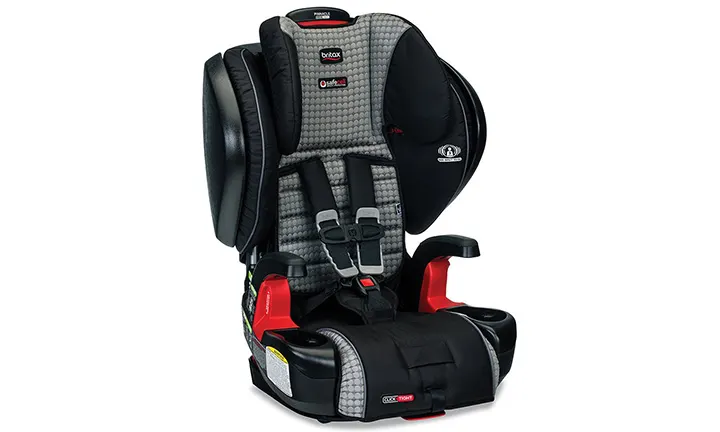
Why pick this one? The Britax Pinnacle seat converts from a high-back to a backless booster seat. Seat installation is simple because of the special ClickTight Installation System. The high-back seat has a deep foam-lined shell and cushioned head protection. There are two built-in cupholders that are easy to clean.
This booster seat has a nine-position, quick-adjustment harness that grows along with your child. The harness height can be adjusted with the push of a button. The harness on this seat also has removable comfort padding.
Be aware that this seat isn’t compatible with all vehicles. Check the user guide before you purchase it.
Highlights: The Britax SafeCell Impact Protection System includes a steel frame, an energy-absorbing base, staged-release stitches that reduce forward movement if a crash occurs, and a V-shaped tether to reduce seat rotation.
Details:
Price*: about $299.99 on Amazon.com
Pampers Parents pros and cons:
4. Evenflo Chase Harnessed Booster

Why pick this one? This seat converts from a five-point harness, high-back seat to a booster seat that uses your vehicle seat belt. The five-point harness is adjustable from the front of the seat so it’s easier to get your child in and out of the seat. The LATCH system makes for easy installation.
Keep in mind that the harness straps have to be manually re-threaded each time you need to adjust them to fit your growing child.
Highlights: This seat has four shoulder harness positions and two crotch strap positions. The head pillow and seat cushion are removable and machine washable.
Details:
Price*: about $64.99 on Amazon.com
Pampers Parents pros and cons:
5. Chicco KidFit 2-in-1 Belt-Positioning Booster
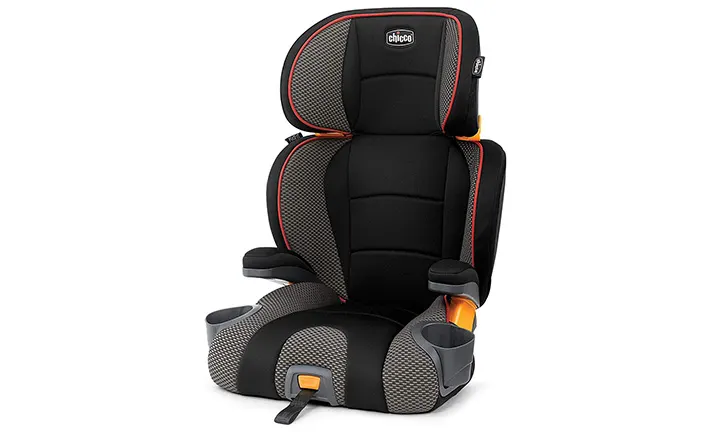
Why pick this one? This high-back booster transitions to a backless booster. The high back has a 10-position height adjustment. The height is adjusted from the base of the seat back rather than the headrest area to provide head and shoulder protection. The KidFit is equipped with SuperCinch one-pull tighteners and a premium LATCH system to make stabilizing the seat easier. The LATCH system also keeps the seat in position when it’s not in use.
The contoured ErgoBoost seat has double foam padding for comfort. The two-position backrest adjusts to mimic the vehicle seat position. This seat has two dishwasher-safe cupholders that can be hidden away when they’re not in use.
Be aware that some Pampers Parents said the seat belt tends to fall out of the built-in seat belt guide when you take your child out of the seat.
Highlights: All the fabric on this seat, including the armrest covers, are easy to remove for quick and machine-washable cleaning.
Details:
Price*: about $99.99 on Amazon.com
Pampers Parents pros and cons:
Tips for Using Your Child’s New Car Safety Seat
Whether you’ve chosen a rear-facing, forward-facing, convertible, or booster car seat, follow these tips for using your new car seat:
The Bottom Line
Whether you’ve decided on a rear-facing infant car seat, a convertible car seat, or a booster seat for your toddler, we hope you’ve found the perfect car seat for your child.
The right car seat that’s installed and used properly will help make sure your little one is safely protected and comfortable every time you hit the road.
Check out more tips for keeping your little one safe in the car!
Recall Notice
Before buying a product, always check that it’s approved and hasn’t been recalled on sites like the Juvenile Products Manufacturers Association and the U.S. Consumer Product Safety Commission (CPSC).
*Prices are correct at the time of writing.
How We Got These Results
We surveyed thousands of parents in the Pampers Community and asked them to choose the products they love the most, and to share their views on specific products and product categories. Based on the survey responses, we have taken the top product picks and added our own research to create this article. The aim is to help you choose the right product for you and your family. We might receive commissions on purchases made from the links in this article, but the products featured are the Pampers Community’s top choices.
- AAP
- Healthy Children: Car Safety Seats – Information for Families
- Consumer Reports: Car seats
- Book: Caring for Your Baby and Young Child: Birth to Age 5, Sixth Edition Paperback—November 2, 2014 by American Academy of Pediatrics (Author)
Read more about Best Baby Products
Related Articles
Join a World of Support
through Pregnancy and Parenthood.
TRACK WITH TOOLS
LEARN WITH EXPERTS
GET REWARDED

